I keep thinking about perspective and how when I’m making art or sketching something, I have to draw it thinner or smaller than I think because my brain knows what it is. When I’m sketching a tree, I can’t possibly paint all the individual leaves or branches or knots. So I merely suggest them to the viewer and they take over from there.
The imagination fills in the gaps. When I look at a distant hill covered in trees, I know in reality it’s a steep hill comprised of thousands of trees. But in perspective, it’s just a solid mass of grey-brown in the distance. Like in complexity theory, all things we see are made of smaller parts. Because I know that, I have to actively work to keep from drawing every detail. To paint a distant tree-covered hill, I paint a thin line on the horizon and the brain fills in the rest. I merely have to suggest a something and the viewer can make it whatever they want. This is the basis of impressionism.
It's just like that thing where your tongue knows what things will feel like. Look at anything in the room you’re sitting in, and your tongue knows what it would feel like.
Go ahead and try it, I’ll wait. How about that doorknob? Or the window?
Weird, right?
Okay, maybe art isn’t like that at all. Maybe I just wanted you to think about licking something weird.
Anyway, my brain knows that a tree might be 2 ft wide, but to draw it I just make a few marks. I know it’s big and heavy and covered in mossy bark and fungus, but I don’t need to draw all that. Instead, I need a few lines with some branches, and some additional marks to start to convey detail and dimension. A shadow here, a highlight there, and voila.
After a week of sketching trees for the great 30-day tree-sketching challenge, I’ve already learned a bunch of stuff I hope to take into week 2.
For starters, I’m learning to use negative space. It’s effective for conveying a light source and allowing the imagination to fill in what I haven’t drawn. A less-is-more kind of thing.
I’ve learned about Leonardo Davinci’s rule of trees, which states that “the sum of all the cross-sectional areas of a tree's branches at any height equals the cross-sectional area of the trunk.” In other words, all the branches must equal the trunk at any given height. It’s the simplest idea, but it helped my trees look more realistic almost immediately.
I’ve learned that you can suggest all different kinds of textures using varying marks and techniques, but you don’t have to capture every detail. You can scribble assorted marks in loose patterns and foliage or canopies will appear. Again, the imagination does the work.
I’ve learned that I only really knew how to draw a few kinds of trees. After just a few days my brain needed some suggestions on new trees to sketch. There are infinite shapes and styles of trees, but when I sat down to sketch them, my mind went blank. It didn’t take much to be inspired to draw, but left to my own imagination all trees looked like the same tree a kindergartener would draw. I would bet if I keep going with this challenge I’ll really start to use my imagination and get some interesting results.
I’ve learned that I need a challenge like this to make me keep doing it. Like all these kinds of habits, they’re easy for a few days because they’re novel. But as soon as the novelty wears off, it becomes almost like work.
The truth is that work got very busy for me this week, the kids got sick, the weather turned to shit, and the world seemed to conspire against me to keep me from drawing my daily tree. Thankfully I have several friends who volunteered to join in the fun and have kept motivating and inspiring me. Art friends really are the best. I’ve even made some new friends who are sending their own sketches in the comments of notes and articles, and they inspire me even further.
I know the best lessons come when the work gets a little harder and I have to earn it, and I’m learning something every day. Even if it’s only a tiny detail about a tree, or a technique that delivers an impression I like, it’s worth it.
My kids are now into it too. They want to see what tree sketch they’ll wake up to the next morning, and I like that I’m showing them how to take a hobby and improve on it over time. Kids always want instant gratification and everything on-demand, and I like the idea of them seeing me improve slowly.
A few highlights.
I LOVE fountain pens and I’m learning to sketch and draw with them. Using them is different than pigment liners, but very enjoyable because you get to play with different nibs and styles and ink colors. Many people asked what this one was, and the pen is hand-made by Bill and Michele at Barrel and Nib. They do beautiful work.
A few others:

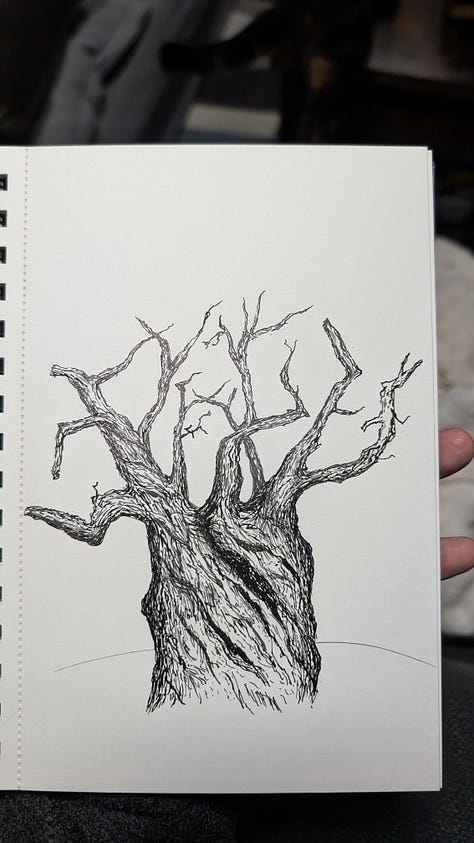
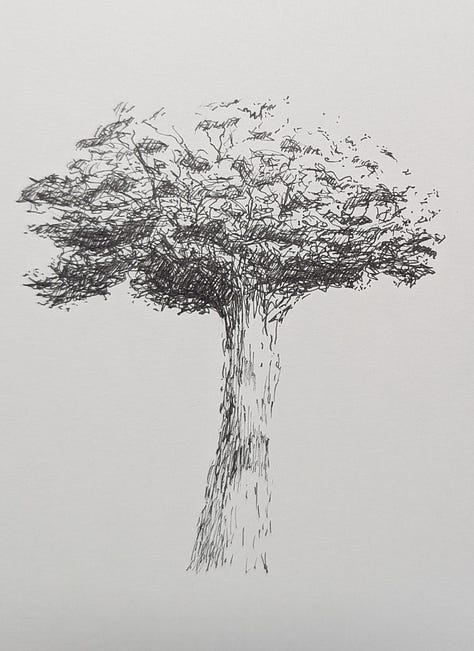
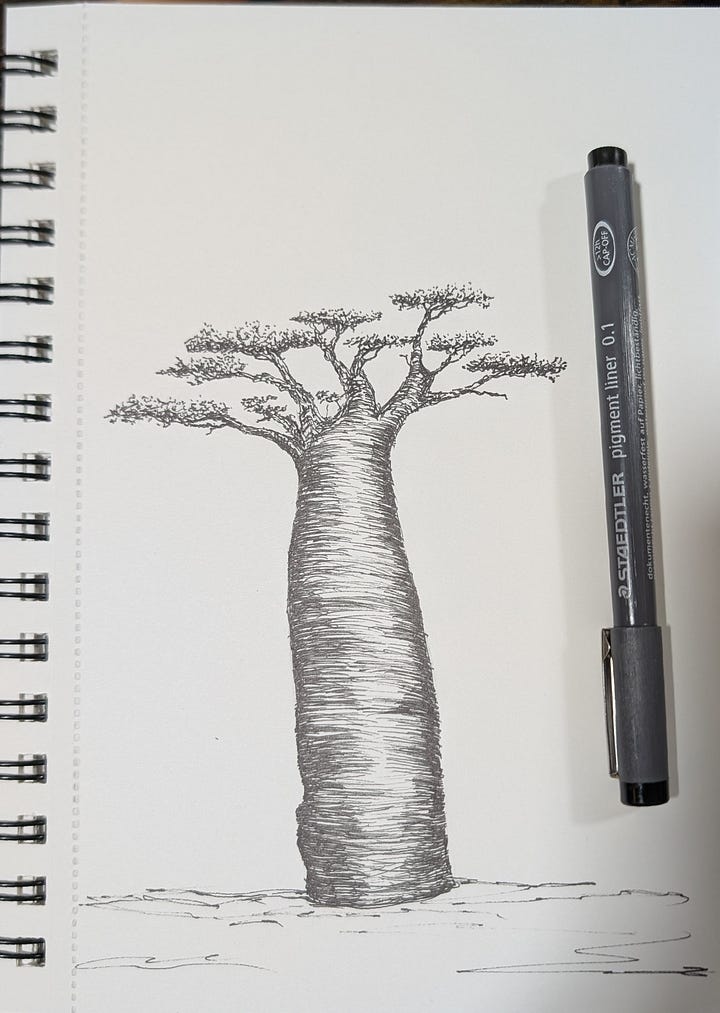

If you want to join us on this little adventure, my original post is here:
I'm Challenging Myself to Sketch a Tree Every Day
While scrolling through the work of some of my favorite artists recently, I came across someone who sketched a lighthouse or something similar every day for a month. Such a simple idea, but I couldn’…





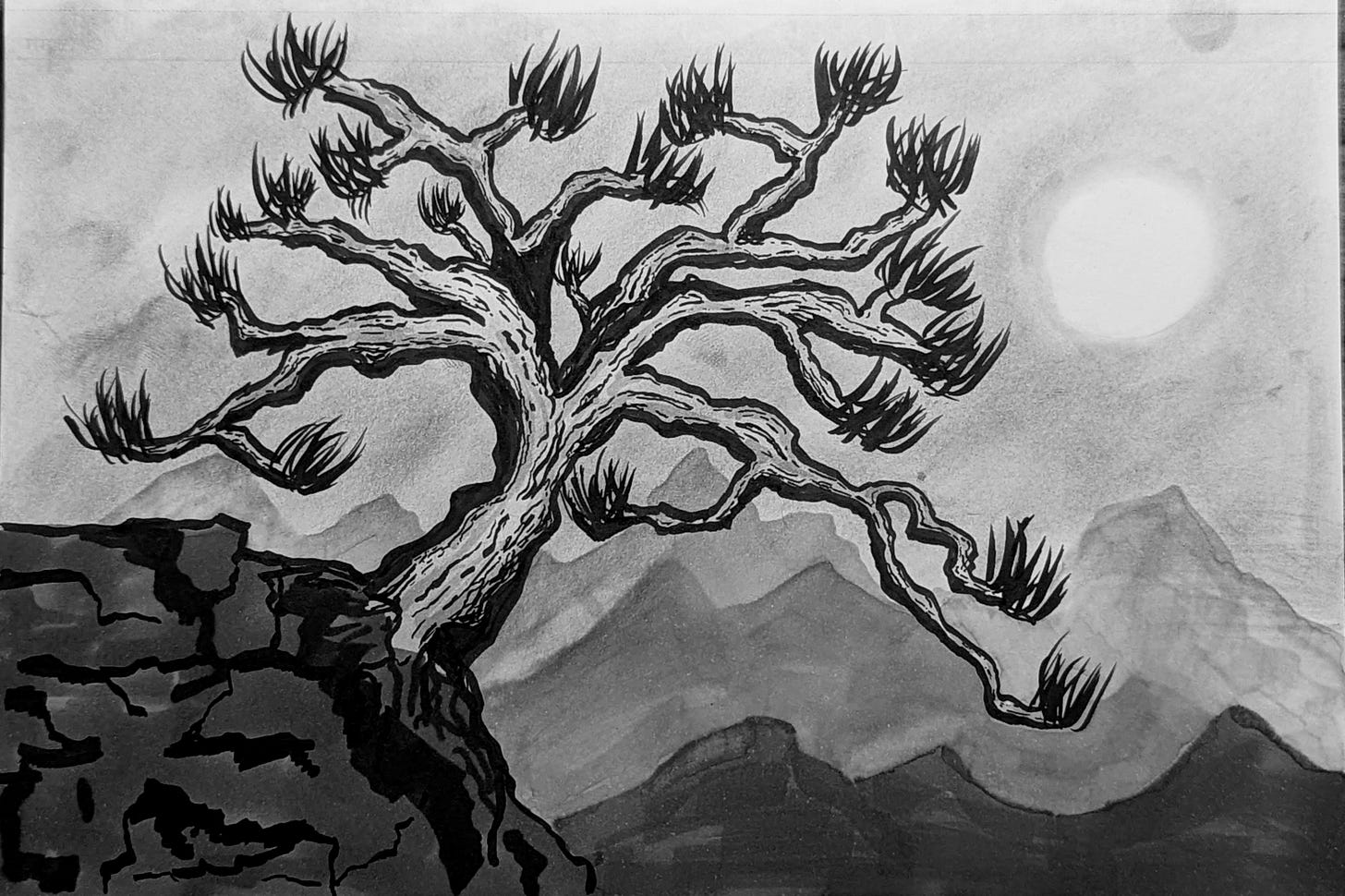
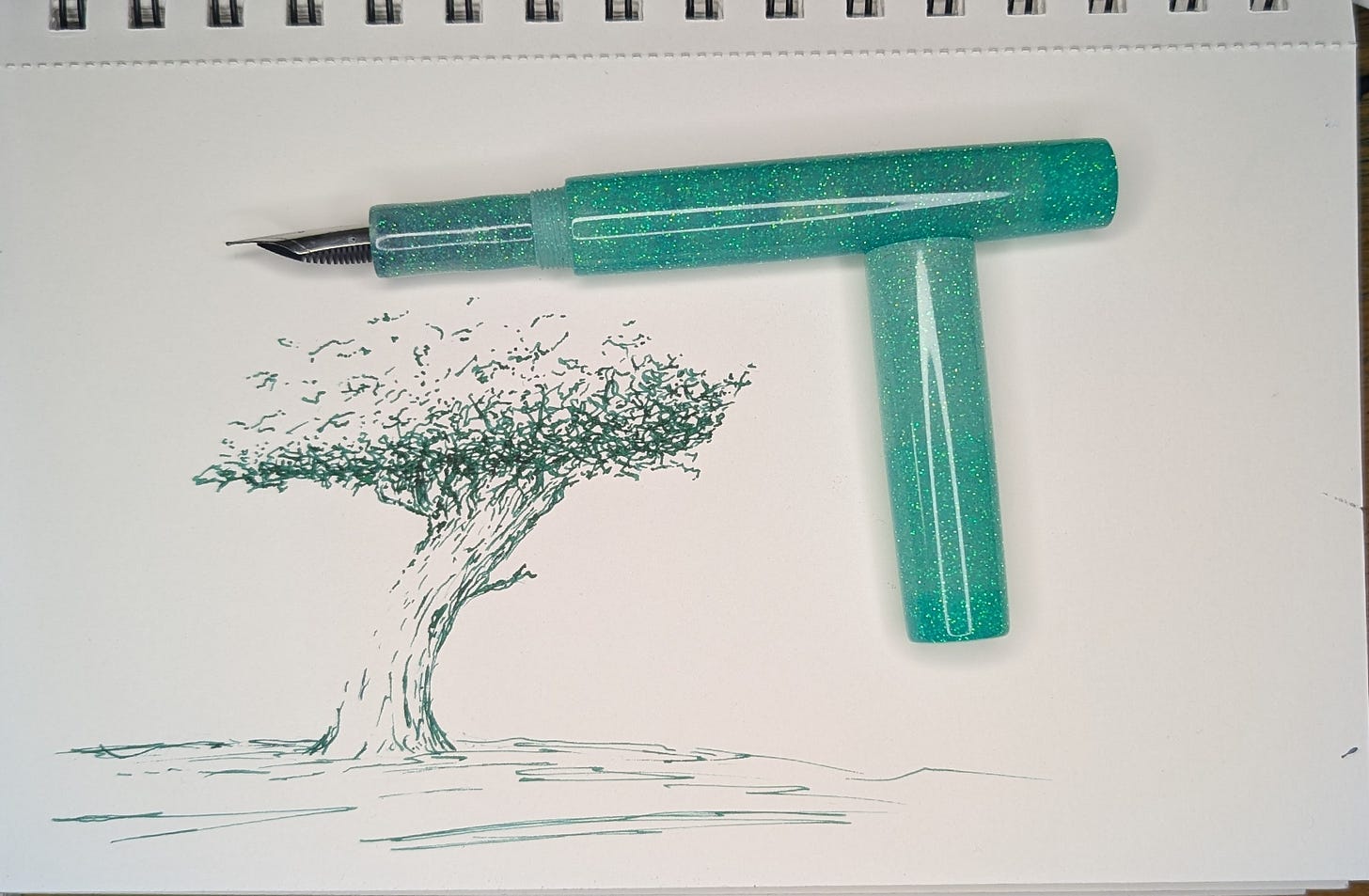
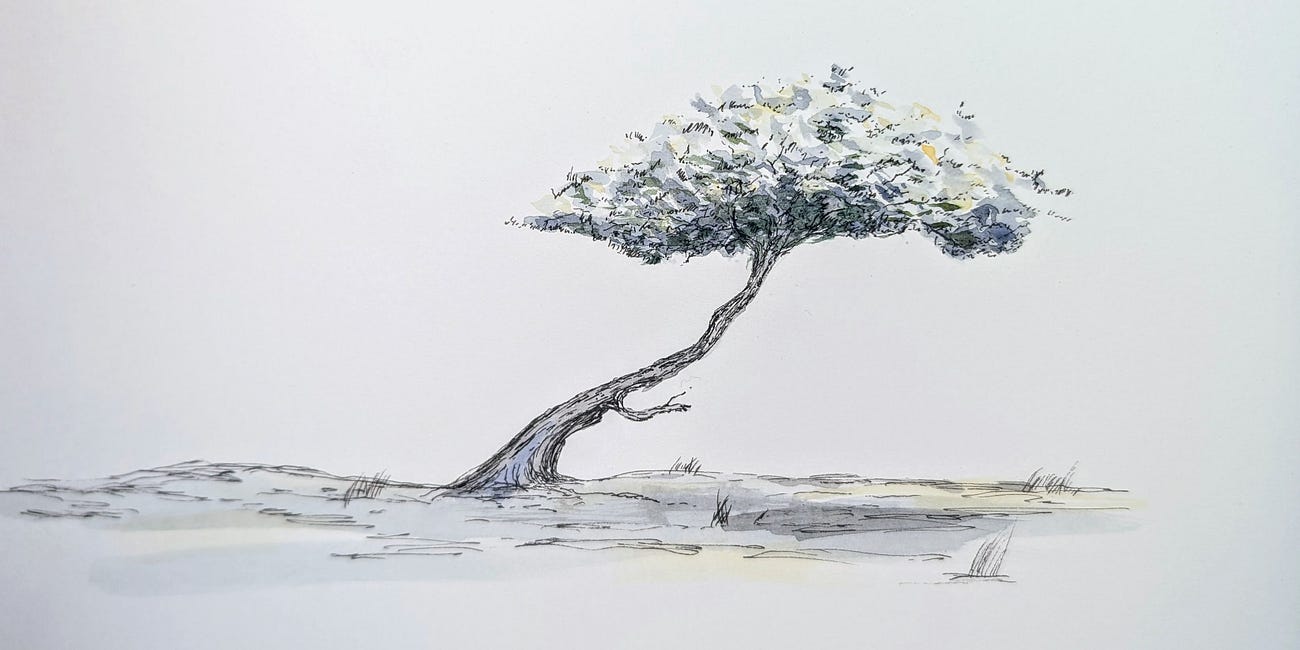
Loved your one-week update, and I’m glad you posted it. I am feeling flattered and bashful, as I think 🤔 I made it into your story as one of your participants in comments, so, awwww, thanks for nurturing us.
I have learned that my illustrations are completely amateurish. Barely able to convey what they’re supposed to. I need work. And I’ve learned that my stories about the drawings are just as important to me as the drawings themselves. I’ve also learned that even without training or the proper tools, I have managed to draw things that actually look like trees. Wasn’t sure I could draw trees. It has made me notice trees everywhere. The amazing varieties! So many types of trees!
I’ve learned that I very much enjoy being challenged like this. Last night I was thinking that it would be fun to continue the challenges after the tree month has concluded. I would enjoy future drawing or writing challenges. Maybe a whole month of one thing might be a bit much. Maybe a week or ten days. Ten days of water illustrations. Ten days of birds.
Regardless of whether you do future challenges, I have truly enjoyed this one! Thank you for inviting us to join your challenge.
I love the concept of reflecting on the drawings each week. It is through reflection, or rather putting it into words, that it will stick.
I love your comment about the kindergarten style when your mind runs out of trees. In creative workshops we see that as the first step to freeing yourself from the familiar, it's called 'purge of ideas'. so now it gets exciting... :) :)